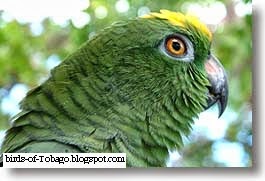 |
| Yellow-crowned Night Heron (Nyctanassa violacea) |
Yellow-crowned Night Heron
Order : Ciconiiformes
Ciconiiformes compromise five to six families of large, long legged wading birds with long bills. They primarily occupy fresh or shallow saline water where they feed on fish, crabs, crustaceans, insects and carrion. Most nest in trees, though some nest in swamps or on the ground. the young are altricial (born bare and blind and dependent on parents for food) Most species are colonial, but the use of sound is limited or uncommon, the birds relying more on displays and rituals. Most are strong, often elegant flyers.
Family : Herons (Ardeidae)
The family Ardeidae is made up of Herons, Egrets and Bitterns where Egrets are considered simply as white Herons with decorative plumes and not a biologically separate group. Herons fly with their necks retracted not outstretched like some other members of the Ciconiiformes order. Typically Herons feed in shallow waters or marshes taking fish, frogs, crabs, and even small birds or mammals. They are widely distributed around the world but are most common in the tropics. The nest is made of twigs, usually placed in trees near water, and usually grouped in colonies called Heronries. Herons are sub divided into three groups. Typical Herons which include the genus Egratta, feed during the day. Night Herons, which are usually shorter legged and thick billed, are more active at dusk and during the night, and Tiger Herons which are six species of the more primitive Herons.
Name : Yellow-crowned Night Heron (Nyctanassa violacea)
Length : 51 - 55 cm ( 22 - 28 in )
Local Names : Night Gaulin, Crab catcher
The Yellow-crowned night Heron is mainly grey with a black head, yellow eyes and white cap which turns buff yellow during breeding season, the sexes being similar. Juveniles are brown flaked with grey or white. The nest is a platform of sticks usually in Mangrove trees, where 2 - 4 pale bluish - green eggs are laid. Both parents rearing the young. The birds often remain quite motionless while waiting for their prey of crab, fish, frogs, crustaceans and insects and can be active during the day, though typically are most active around dusk. While incubating the young, both parents can readily be found at the nest during the day, hunting more at night. The species ranges from eastern North America throughout the West Indies to northern South America, some birds migrating to warmer climates during winter months.
#Yellow-crowned Night Heron #Nyctanassa violacea #Herons #Ardeidae #Ciconiiformes #birds of the West Indies #birds of Tobago #birds
Bird identification images
 |
| Juvenile |
 |
| Yellow-crowned Night Heron (Nyctanassa violacea) |
















